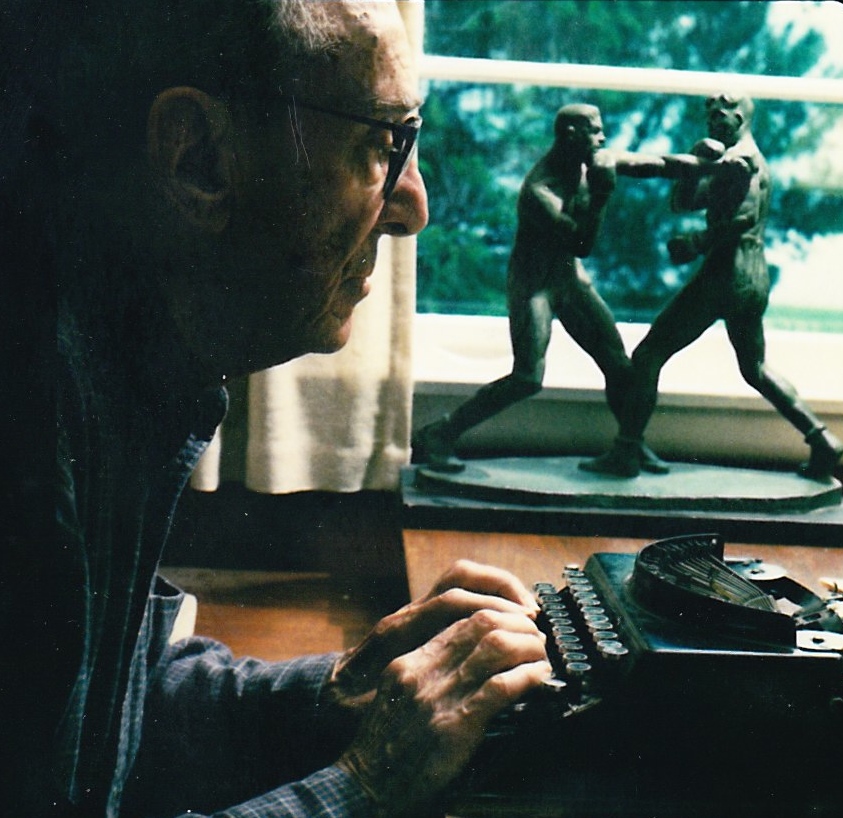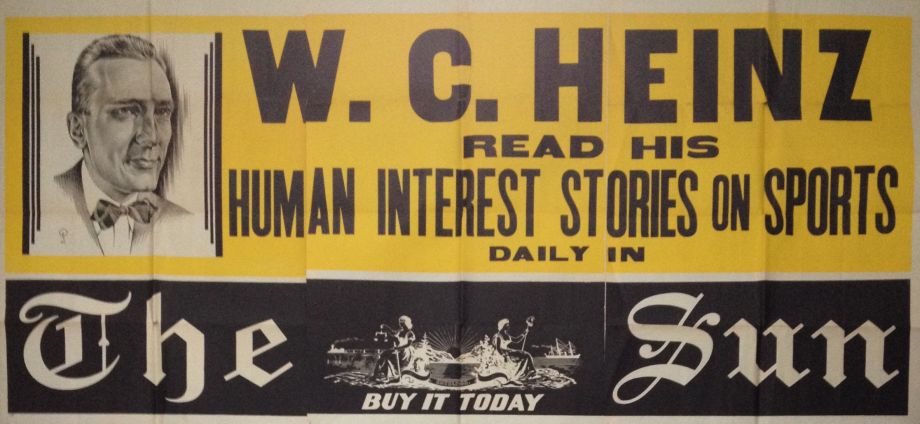Career
After graduating from Middlebury College in 1937, Heinz began his career at the New York Sun where he advanced from messenger to copy boy to city side reporter and feature writer. In the fall of 1943 he became The Sun's junior war correspondent, and he spent his first seven weeks aboard a US Navy aircraft carrier reporting on the hunt for German submarines in the Atlantic Ocean. On April 1, 1944 he arrived in London to cover the preparation of allied troops for the D-Day invasion. Then on May 31 he boarded the battleship USS Nevada to report on the bombardment and invasion of Normandy. In August when The Sun's chief correspondent was captured by the Nazis, Heinz took his place with the First Army, remaining with them across the battlefields of Europe until reaching the Elbe River where they joined with the Russians, sealing off the armies of the Third Reich, and helping to bring an end to the war. His years as a war correspondent provided Heinz with a rich canvas of stories to tell. He has described the war as "a patsy for learning writers... the perfect foil, the perfect sparring partner. It was so dramatic, you couldn't write it badly." It didn't come easily, though, and Heinz suffered with the guilt and fear he felt as he witnessed so many young troops sacrificing their lives while he struggled to get their stories right.
After his return to New York, a three-month vacation, and $1000 bonus, Heinz was awarded a position in the Sun's sports department (having declined their offer for a prestigious position in their Washington, D.C. bureau.) He wanted to write sports, and in 1949 he was given his own sports column, "The Sport Scene." (The yellow banner above is one of the advertisments that adorned the sides of the Sun's delivery trucks in 1949.) Although he was drawn especially to boxing, the "truest " of all sports, in July of that year he wrote his best known and most anthologized column, now a classic piece of sports literature, "Death of A Race Horse. " With fewer than 1,000 words, it has been referred to as "the Gettysburg Address of sports writing, a run of words so slender and moving that nothing can be added or taken from it. " (Jeff MacGregor, Sports Illustrated)

When The Sun ceased publication in January of 1950, Heinz turned down offers from various admiring newspaper editors to, instead, pursue a freelance career writing for magazines. Over the next thirty years he contributed to, among others, Argosy, True, Esquire, Colliers, Saturday Evening Post, Sport, Look, and Life. His subjects included boxers such as Rocky Graziano, Sugar Ray Robinson, Rocky Marciano, and Floyd Patterson as well as other sports figures including jockey Eddie Arcaro, hockey great Gordie Howe, Vince Lombardi, Joe Namath, Stan Musial and Joe DiMaggio.
In 1958 Heinz published his highly acclaimed first novel, The Professional, which Hemingway touted as "the only good novel about a fighter I 've ever read, and an excellent first novel in its own right. " In the early 1960 's Heinz collaborated with then Green Bay Packer coach, Vince Lombardi, to write the football classic, Run to Daylight!
Throughout the sixties and seventies Heinz widened his audience with various human interest stories for the major magazines with subjects including the civil rights movement, his return to Europe twenty years after the war, a Navajo medicine man, and a thoracic surgeon. His cover story for Life magazine, "A Man With A Life In His Hands" (1961) met such great acclaim that he expanded it into the novel The Surgeon (1963) which was a selection of two major book clubs and appeared in twenty-five editions in twelve languages. Having read the opening chapters of the book, Dr. H. Richard Hornberger in Maine tracked Heinz down to request his help in rewriting his failing manuscript, which under their single penname, Richard Hooker, became the novel MASH (1968.)
In 1974 Heinz published his documentary novel Emergency, that tells the story of lives that are saved, lives that are lost, and those that are changed by the daily challenges that take place in the emergency room. In the late seventies Heinz revisited his sports roots when he traveled the country searching out some of yesterday's heroes, athletes whose struggles to succeed in their sport and in their lives had put them in Heinz's pantheon of most admired. His journey and theirs, decades beyond their glory days, are captured in Once They Heard The Cheers (1979). In his collection of pieces that make up American Mirror (1982) Heinz explores what makes people brave and pays tribute to ordinary people who, in extreme situations, performed with courage and determination. In 2001 DaCapo Press collected some of his best sports writing in the book What A Time It Was. In 2002 they followed up with a selection of Heinz's World War II dispatches, When We Were One: Stories of World War II. Heinz also edited two boxing anthologies, The Fireside Book of Boxing (1961) and The Book of Boxing (1999 - with Nathan Ward.) In March of 2015, in celebration of his centennial, The Library of America published the definitive collection of the best sports writing of W. C. Heinz, The Top of His Game.
Heinz's national network television credits are "Biograpy of a Fight" with Floyd Patterson, Ingemar Johansson, Jack Dempsey, Gene Tunney, and James Cagney, and "Run to Daylight!" with Vince Lombardi and the Green Bay Packers.
W. C. Heinz was awarded the E.P.Dutton Award five times for best magazine sports article of the year, the A. J. Liebling Award for outstanding boxing writing, and, posthumously, the Associated Press Red Smith Award for his groundbreaking and continuous contributions to sports journalism. His work has been reprinted in more than sixty anthologies and textbooks. He was inducted into the National Sportscasters and Sportswriters Hall of Fame (2001,) the International Boxing Hall of Fame (2004,) and the Red Smith Hall of Fame (2010.)
